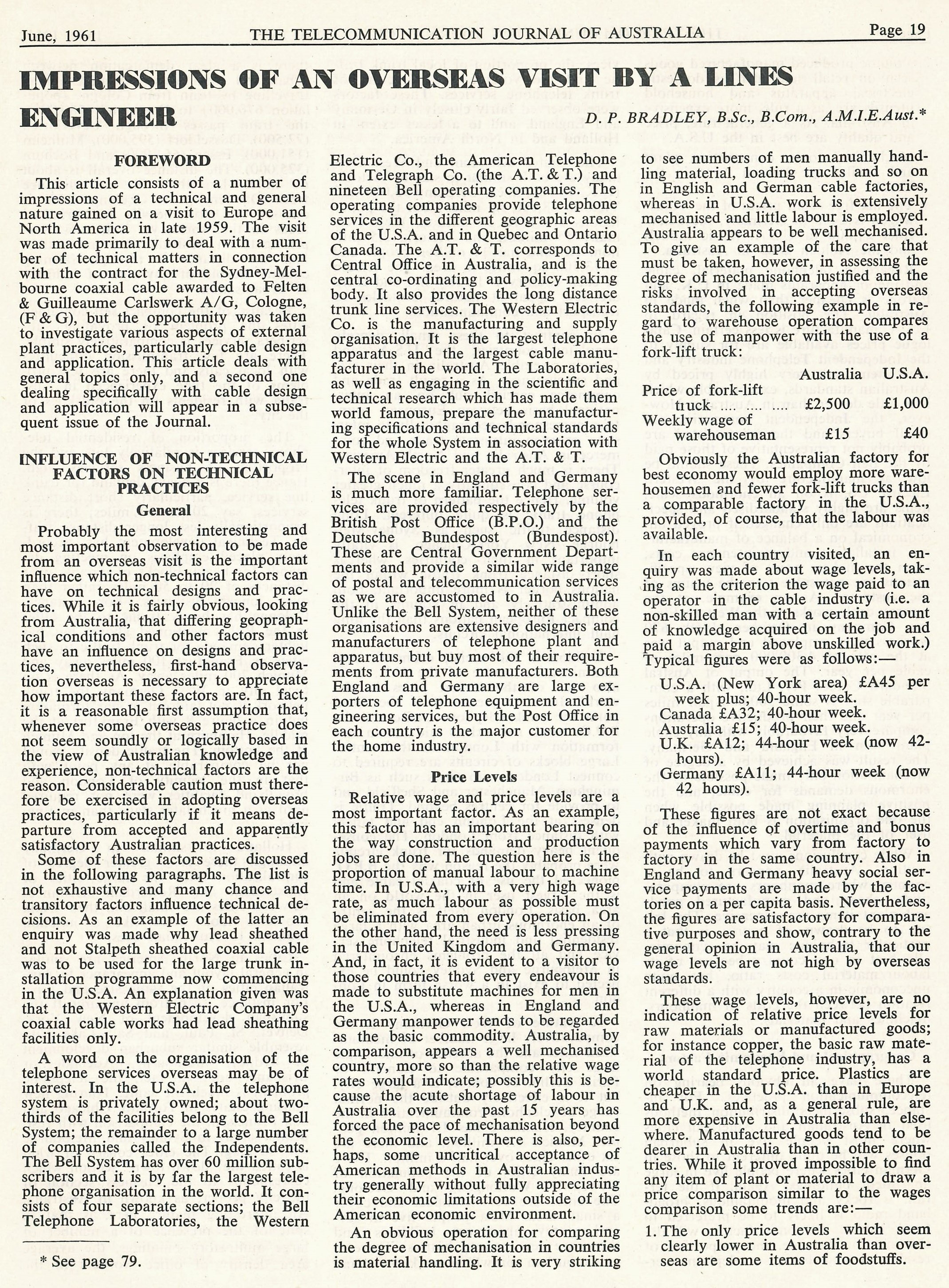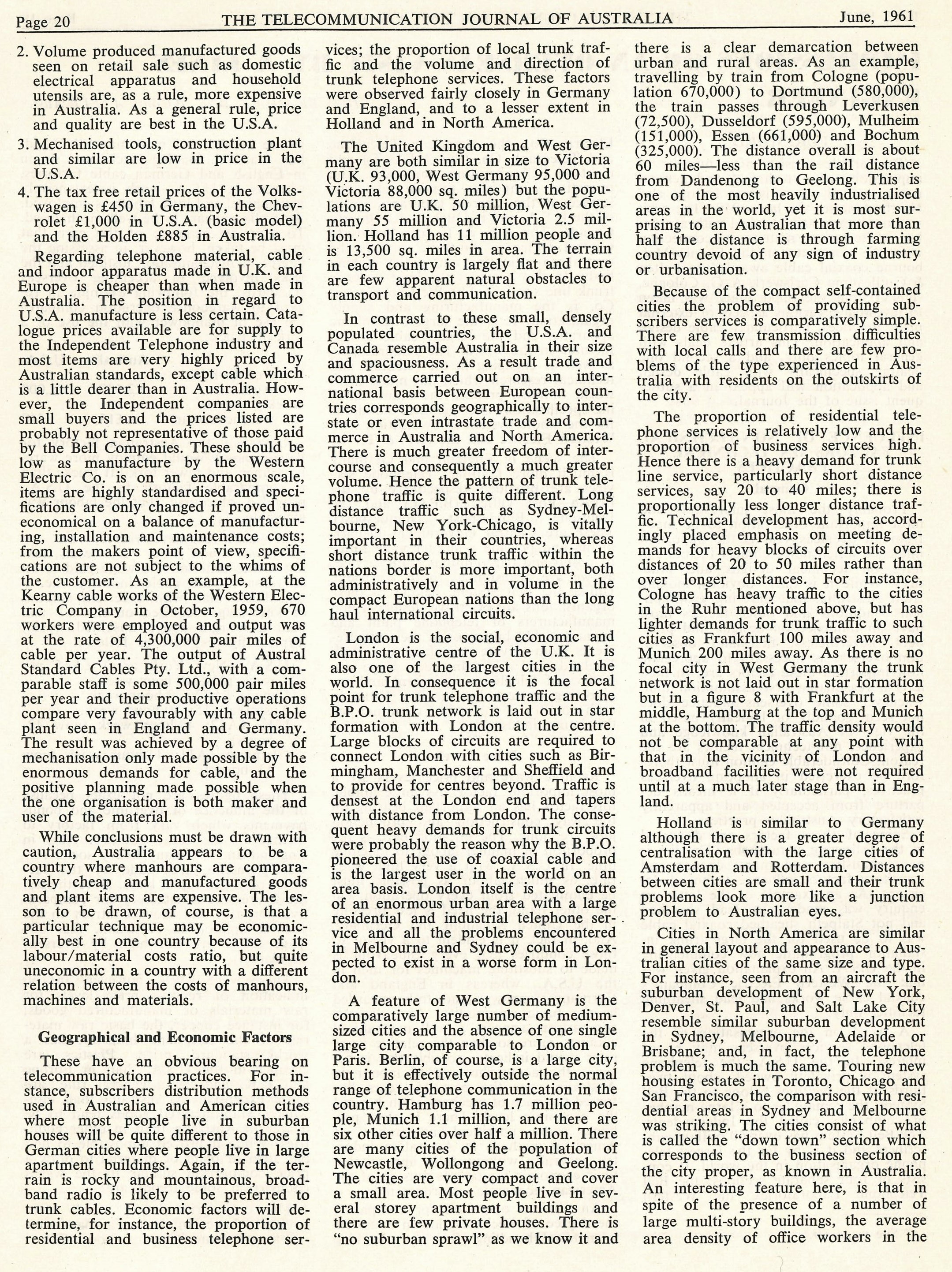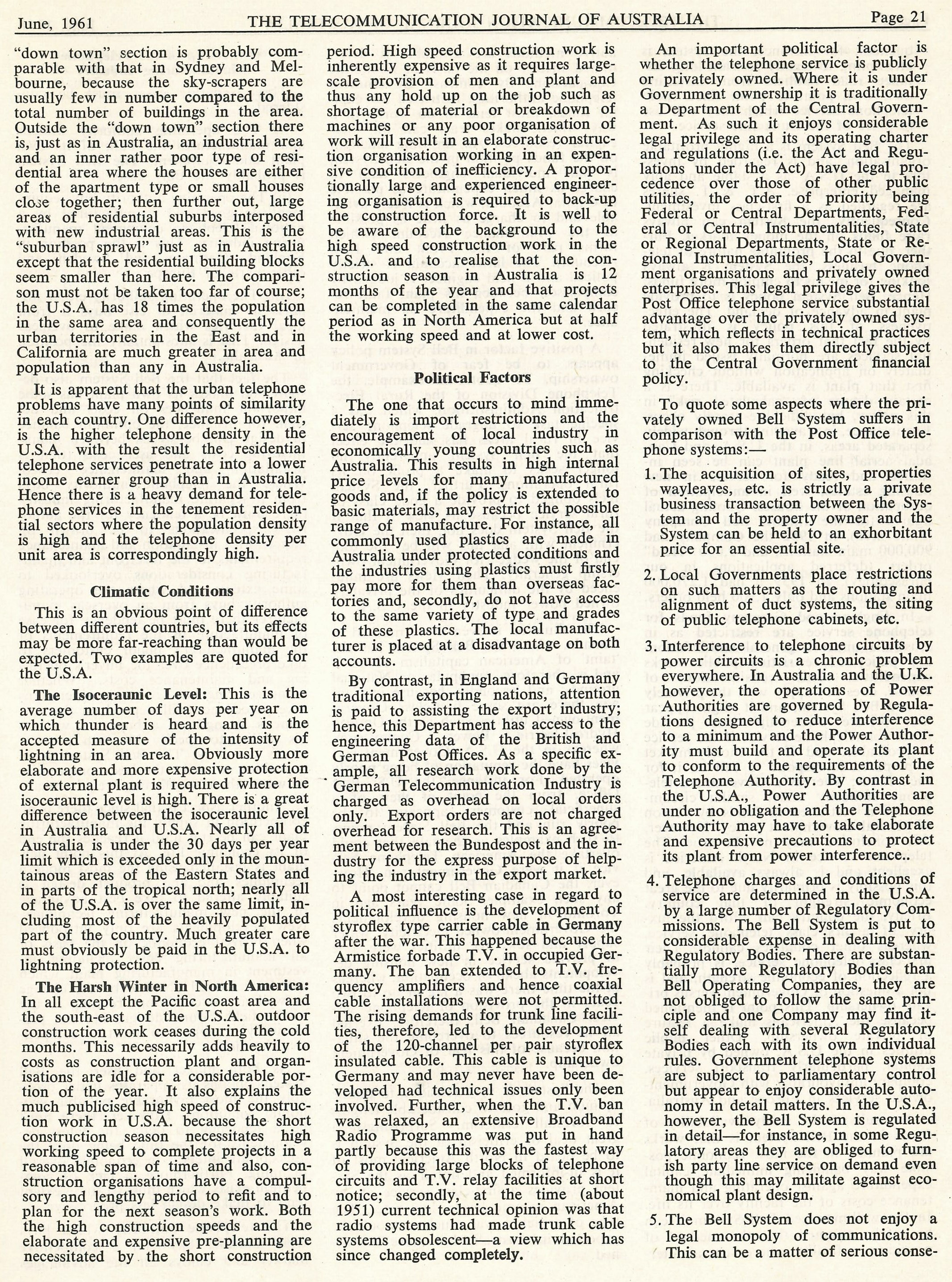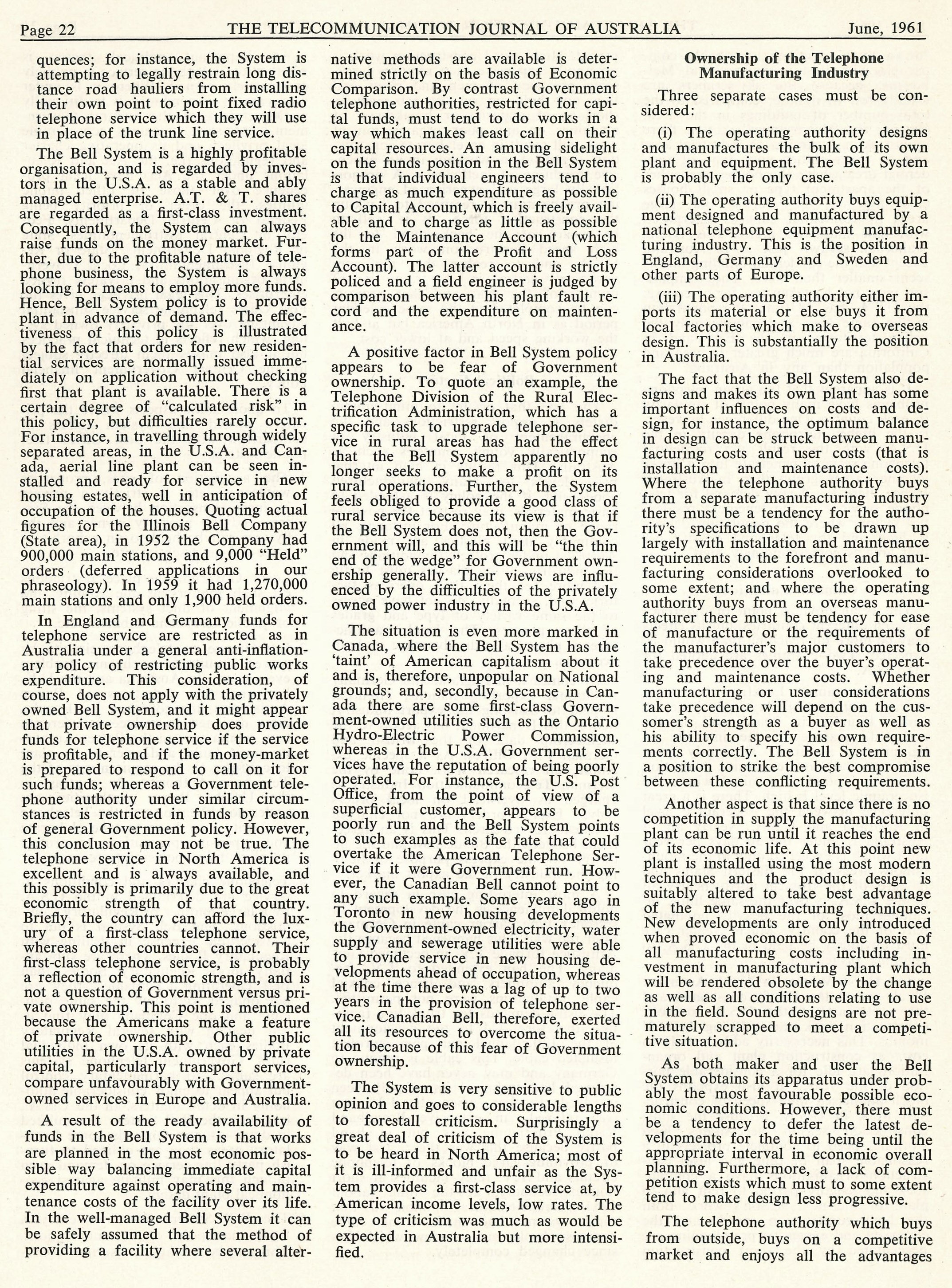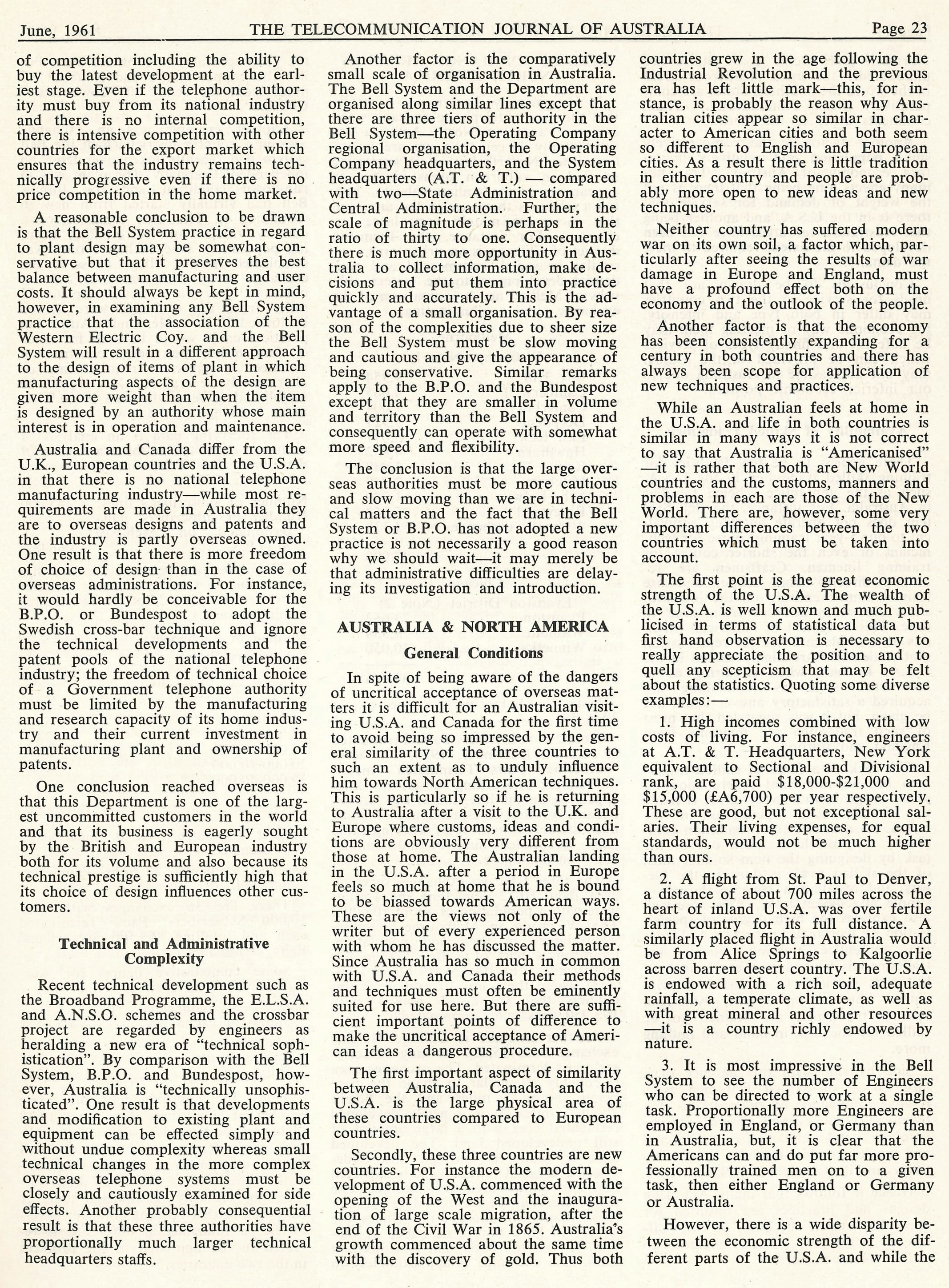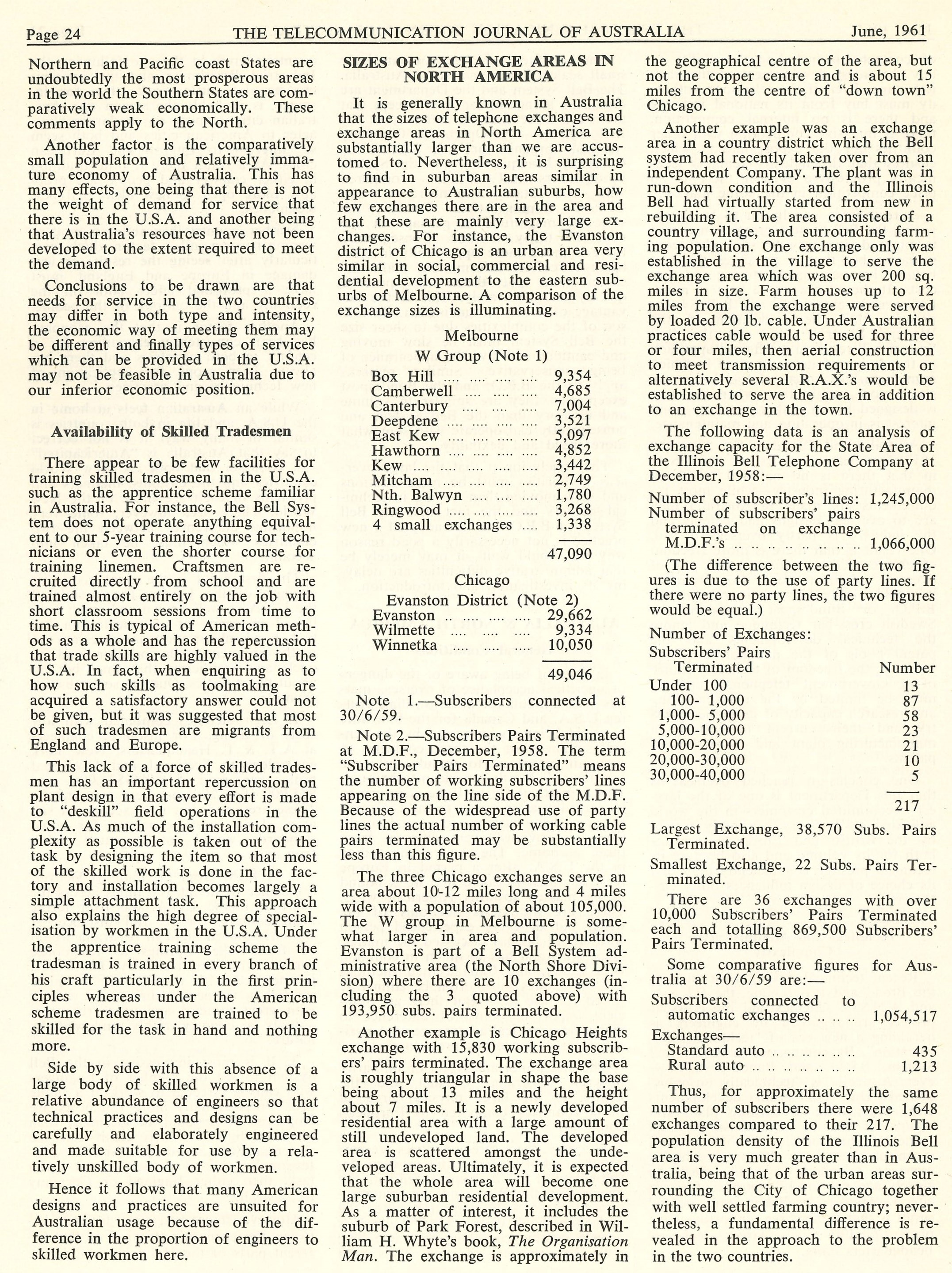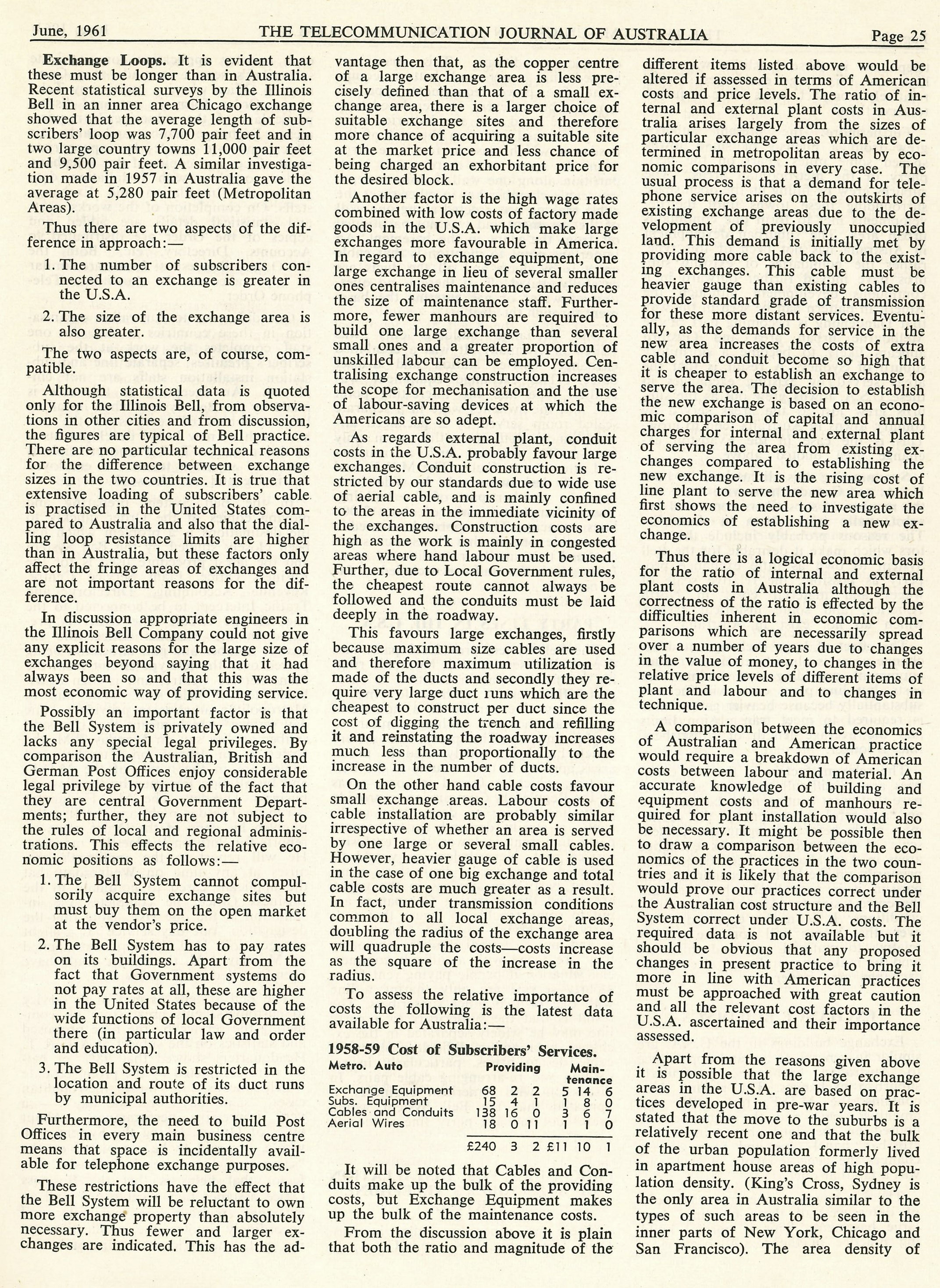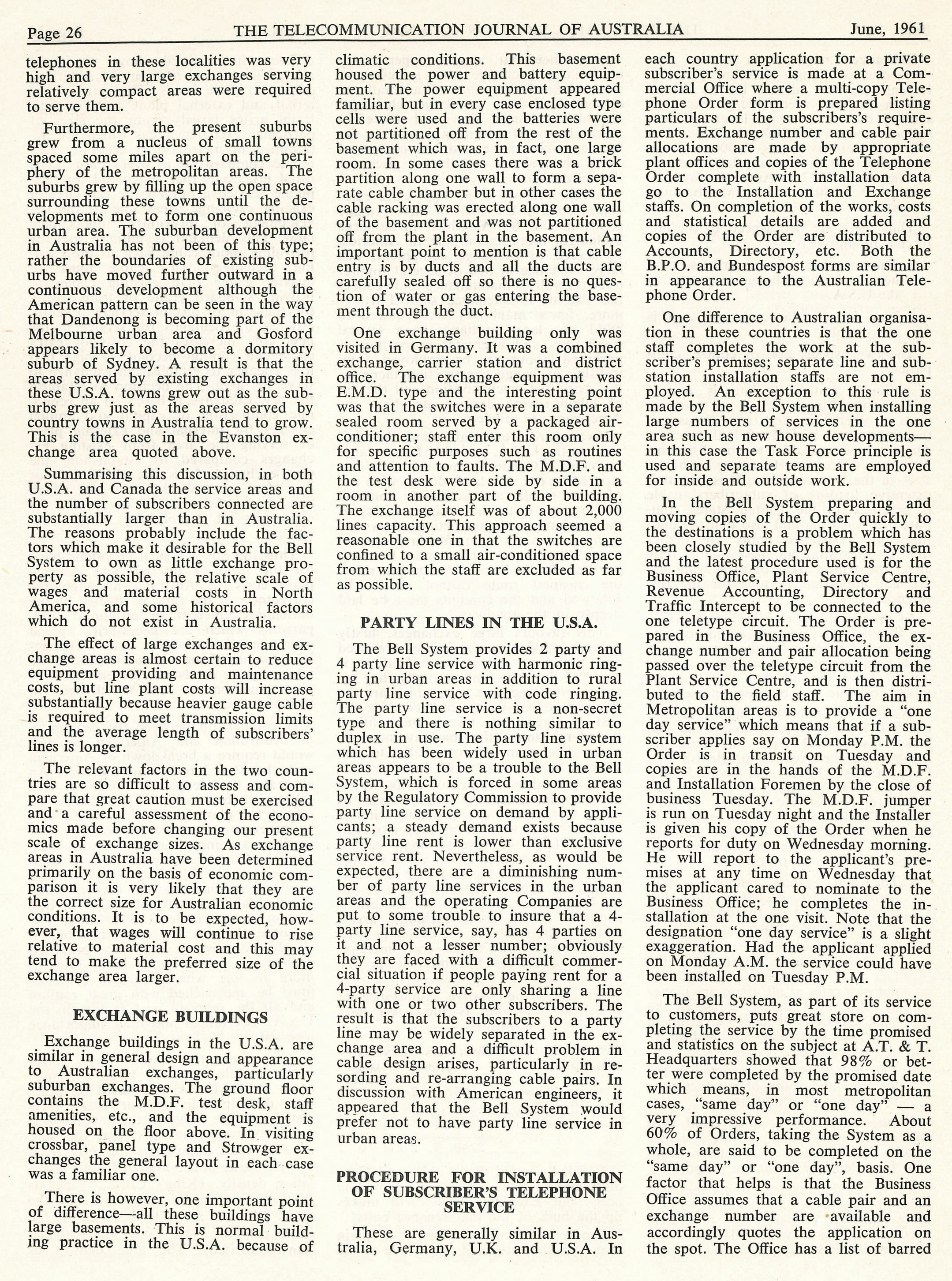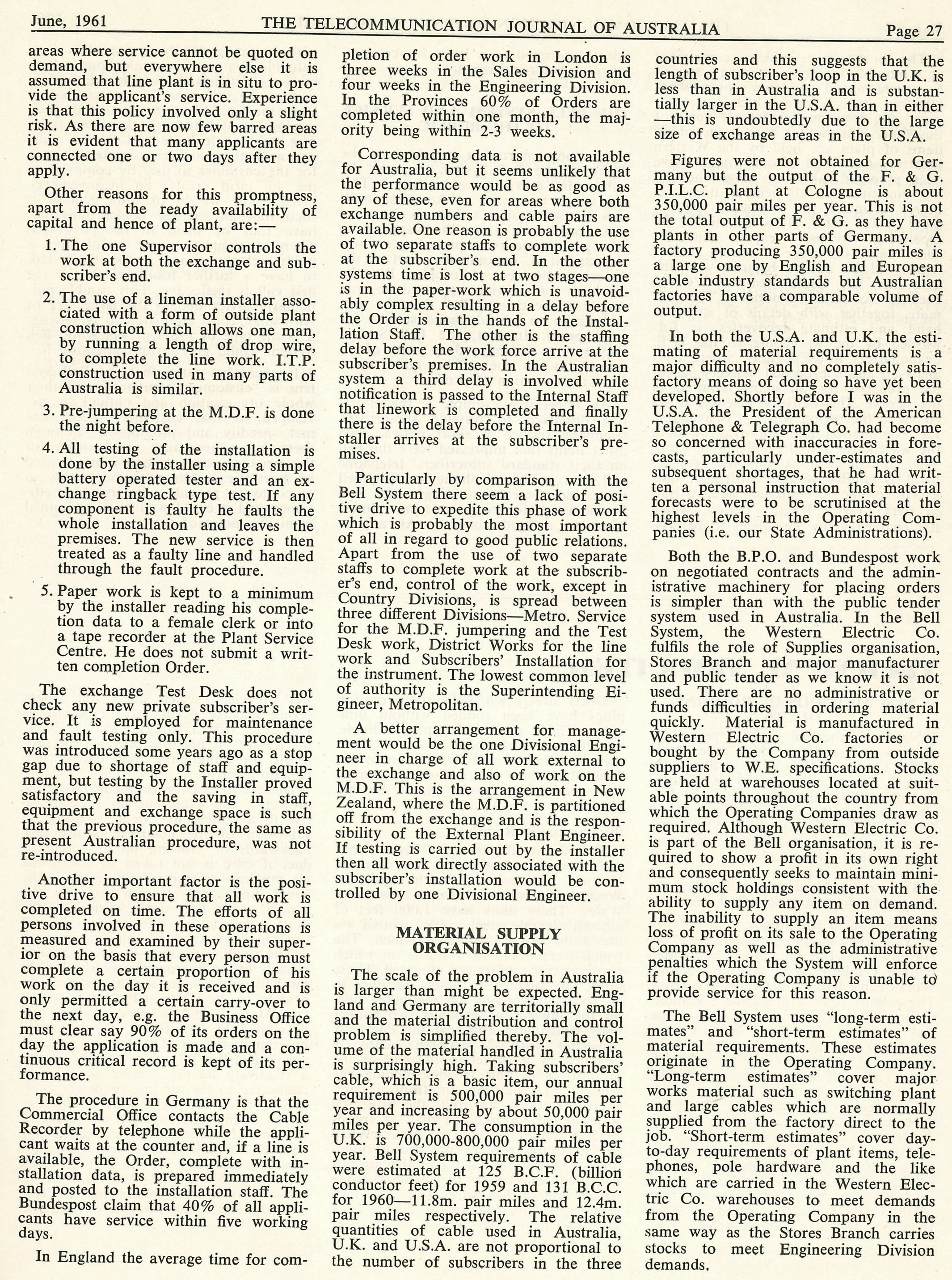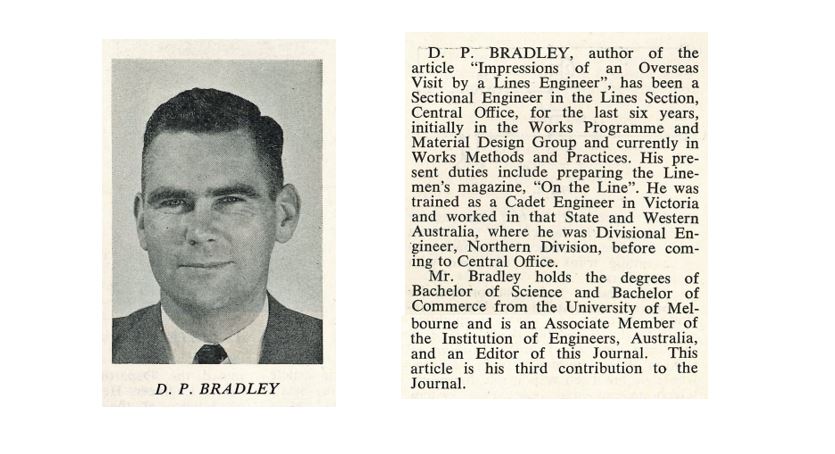Abstract
A fascinating paper from 1961 contrasting the technical and general differences in providing telecommunications services in Europe, North America and Australia.
Introduction
This historic paper was published in June 1961 at a time when overseas fact-finding assignments were a privilege for the recipient. A detailed report was required by management upon return (around 12,000 words in this example) which was widely circulated within the Postmaster-Generalâs Department and ultimately published in the Telecommunications Journal of Australia (Volume 13, Number 1).
The actual overseas visit took place in late 1959 and was primarily to deal with technical matters in connection with the contract for the Sydney-Melbourne coaxial cable. The opportunity was also taken to investigate various aspects of external plant practices.
The paper is particularly interesting as it details the influence of non-technical factors on technical procedures. Relative wage and price levels are discussed and their influence on telecommunications manufacturing. For example, wages were higher in North America and the cost of materials handling equipment was lower, which encouraged a greater level of mechanisation in cable manufacture, compared to Europe.
The paper boldly examines various political factors which influence telecommunications infrastructure. For example, import restrictions on manufactured goods and raw materials in support of local industry are discussed. The report analyses the ownership of the telecommunications manufacturing industry in each country. It also contrasts the advantages and disadvantages of government or private ownership of telecommunications assets, and the flow-on effects to site acquisition, standardisation and interworking.
This is 1959 and well before the break up of Bell in 1984; however, the paper states the Bell System in Canada has a âtaint of American capitalism about it and is therefore unpopular on National groundsâ. It also cautions the reader on one hand about the dangers of uncritical acceptance of overseas matters, while, however, it cannot help but be impressed by the North American techniques.
The second half of the paper provides a detailed comparison between Australian and North American telecommunications infrastructure. This is a fascinating insight into the industry at the time and covers topics such as skilled tradesmen, exchange areas, subscriber services, buildings, installation and material supply.
The paper finishes with a short appraisal of the Bell System and the service provided to the public, namely: âA strong impression is gained of the Bell System to serve the public in every possible wayâ. How this had changed by the breakup in 1984.
Reference
Bradley, D. P. 1961 âImpressions of an Overseas Visit by a Lines Engineerâ, Telecommunication Journal of Australia, Vol. 13, No. 1, June 1961, pp. 19-28.
The Historic Paper

